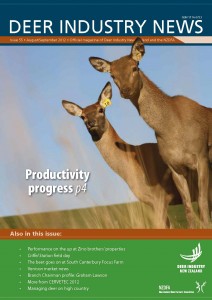Lamb leads a drop in export meat revenue for the June 2012 quarter, according to the latest figures from the Ministry for Primary Industries (MPI).
The Ministry’s Primary Industries: Production and Trade report for the June 2012 quarter, says that this is mostly because of lower export prices from weaker international demand and a build up in meat stocks in New Zealand, particularly for lamb, which fell by 25.6 percent against the same period a year earlier. Venison also recorded a fall of 15.1 percent for the quarter and beef and veal -2.9 percent. In total, meat export revenue for the quarter, was down 14.4 percent to $1.6 billion. Lamb production, however, was up 5.9 percent in the year ended June 2012, with slaughter numbers up 2.4 percent and carcase weights up 2.5 percent on the previous year, says MPI.
“This reflects increased numbers of lambs born in late winter and early spring 2011 and a record average carcase weight of 18.48kg.”
Beef production fell by 1.8 percent in the quarter due to lower slaughter numbers, particularly for cows and heifers, reflecting lower beef cattle inventories at the end of the 2011 season and retentions for an expanding national dairy milking herd.
Offals seem to have had a healthy year with quarterly revenue increasing for ‘other meat’ of 8.5 percent and a year-on-year increase of 10.7 percent, to end June 2012.
Another significant highlight is that China became the number one market for frozen bone-in lamb cuts in the six months to end June, with the European Union now taking second spot, according to MPI. “However, average export prices of lamb sold to China re about half that received in the EU,” the report concedes.
All but one industry grouping experienced a decline in export revenues, the report says. Overall, primary sector revenue for the June quarter was down 5.8 percent, compared with the final quarter in 2011, to $8.8 million. However, during the year ending June 2012 there was a production-driven revenue increase of 1.3 percent to just over $32 billion, due to favourable climatic conditions, MPI says.
Climate conditions for pasture growth for the year ended June 2012 were the best since 2002, MPI notes, with 51.4 days of soil moisture deficit compared to the 20-year average of 61.6 – resulting in record carcase weights for lambs, heifers and cows and record milk solids per cow.
The full report Primary Industries: Production and Trade is available for download at the MPI website (search under Publications).

